Historical Recordings by HT
At the Court of the Mwami (Rwanda 1952)SWP007 listen to sound clip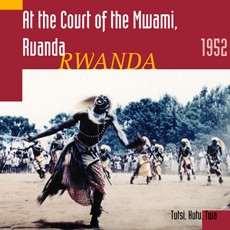
In 1961 the court of the Tutsi king was no more and the music exclusive to it was never heard again! These historical recordings by pioneer Hugh Tracey give us an impression of this place of absolute power and yet beautiful music. |
|
Royal Court Music from Uganda (1950 & 1952)SWP008 listen to sound clip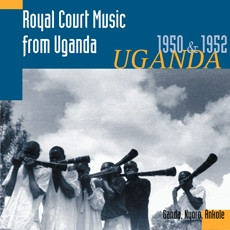
In 1966 the palaces of the Ganda, Nyoro and Ankole peoples were seized and burned, the musicians dispersed or killed and the royal instruments destroyed! Historical recordings by Hugh Tracey. |
On The Edge Of The Ituri Forest (Congo 1952)SWP009 listen to sound clip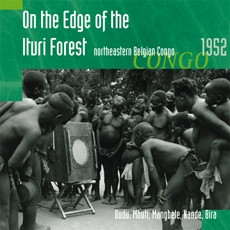
Mbuti pygmies came out of the forest to barter with their Bantu neighbours - Nande, Bira, Mangbele & Budu - but it was also the scene of a unique musical interaction! Historical recordings by Hugh Tracey. |
Kalimba & Kalumbu Songs, Northern Rhodesia (Zambia 1952 & 1557)SWP10 listen to sound clip
SWP010 - The 'thumb-piano' and 'musical bow' are now as rare in Zambia as they were once common! A selection from Hugh Tracey's historical recordings of these wonderful 'little' musics - sometimes extrovert, sometimes meditative. |
|
Kanyok & Luba (Congo 1952 &1957)SWP11 listen to sound clip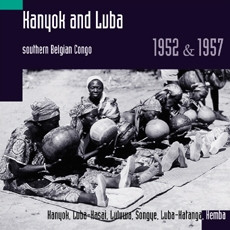
SWP011 - A musical portrait of the lesser known Kanyok people, their various direct and indirect Luba neighbours of southern Congo and the urbanizing Katanga mine culture. Historical recordings by Hugh Tracey. |
Other Musics From Zimbabwe (Southern Rhodesia 1948-1963)SWP12 listen to sound clip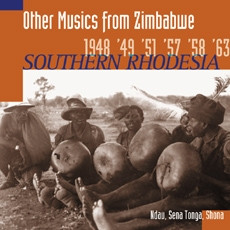
SWP012 - The well-known mbira dza vadzimu is not the only instrument of Zimbabwe! On this album: the versatile mbira dza vaNdau, the almost extinct chipendani and chizambi mouth bows, the njari mbira, the mulanji flute, the thunderous matepe mbiras and wonderful drumming and panpipes. A collection of gems, recorded by Hugh Tracey. |
|
Southern And Central Malawi (Nyasaland 1950, 57,58)SWP13 listen to sound clip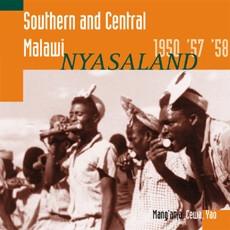
SWP013 - A variety of musics by the Mang'anja, Yao and Cewa peoples, found in the 1950's in the southern half of Malawi - the beautiful bangwe zither, the magnificent tuned drum likhuba ensembles, brilliant xylophone playing, a small big band of kazoos. Historical recordings by Hugh Tracey. |
Northern And Central Malawi (Nyasaand 1950, 57, 58)SWP14 listen to sound clip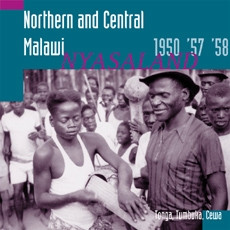
SWP014 - From the northern half of Malawi, more wonderful bangwe zither songs and malipenga kazoos, but also the karigo lute, the kubu bow, the kalimba - and exceptional a capella singing. Tonga, Tumbuka and Cewa peoples recorded by Hugh Tracey. |
|
Origins Of Guitar Music (Southern Congo & Northern Zambia 1950, 51,52, 57, 58)SWP15 listen to sound clip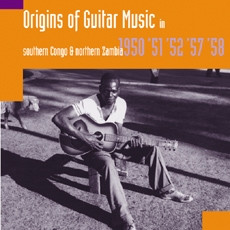
SWP015 - In the new urban culture during the fifties in the copper mining towns of Katanga Province in southern Congo and on the Copperbelt in northern Zambia, the guitar became an important status symbol. An exciting document, the emergence of a new sound - with some famous names such as Mwenda Jean Bosco and George Sibanda. |
Forest Music (Northern Belgian Congo 1952)SWP16 listen to sound clip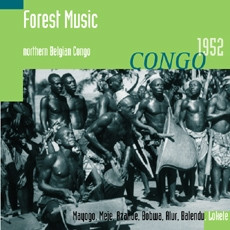
SWP016 - This album mainly features two Mangbetu groups - the Mayogo and the Meje - with drum ensembles, mass singing, exquisite likembe playing, and the Azande people with xylophone and the intimate kundi harp. More harp by the Balendu and a unique recording explaining the language of sending messages by talking drums. Music from another world. |
|
Tswana And Sotho Voices (Botswana, South Africa, Lesotho 1951, 57, 59)SWP17 listen to sound clip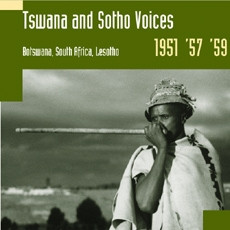
SWP017 - Zulu singing may be well known nowadays, but the voices of two neighbouring peoples - the Sotho and the Tswana - have until now remained out of the spotlight. Their singing of songs of great beauty is both powerful and moving, and their voices are also very present in the festive ditlhaka reedpipe ensembles and eerie lesiba mouthbow songs. |
The Nguni Sound (South Africa And Swaziland 1955, 57, 58)SWP20 listen to sound clip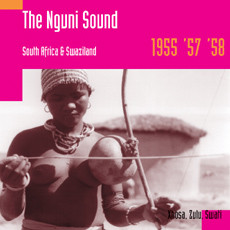
SWP020 - By 'the Nguni' is meant the peoples along the SE coast of Africa, who are known as Xhosa, Zulu, Swati. On this album we hear unaccompanied groups singing with great vocal power, strength of melody, richness of harmony, and intimate songs with music bows, some examples of western instruments readily adopted and the seemingly natural step to an own jazz style. |
|
Southern Mozambique (Portuguese East Africa 1943, 49, 54, 55, 7, 63)SWP21 listen to sound clip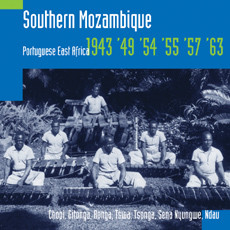
SWP021 - Mozambique is the longest country in Africa, and has a correspondingly wide range of cultures and music. The area below the Zambezi River is generally referred to as 'Southern Mozambique'. Sit back and be amazed, by xylophones, drums, mbiras, singing horns, reedpipes and young girls playing ocarinas as if in a dream. |
Tanzania Instruments (Tanganyika 1950)SWP22 listen to sound clip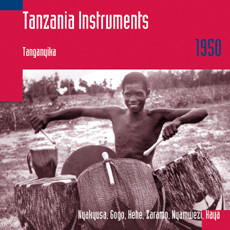
SWP022 - Features master-musicians playing some of the many instruments that were to be found in this large country, in both instrumental tunes and in accompaniment of songs. The dark rumblings of the nanga trough zither, sparkling likembe notes, deep drumming, flute laments, panpipes - from the northwestern corner near Lake Victoria to the musical melting pot of Zanzibar. A journey of highlights only. |
|
Tanzania Vocals (Tanganyika 1950)SWP23 listen to sound clip
SWP023 - This cd is a selection of a capella performances. Listen to more than 600 Chagga men and women chant on the southern slopes of Mt. Meru, hear timeless praise songs by the Gogo, humorous songs by the Nyamwezi, lyrical wigasha dance songs by the Sukuma near, and the unmistakable Maasai chanting. Vocals straight from the heart, by peoples without any kind of identity crisis. |
Secular Music From Uganda (Uganda 1950 & 52)SWP24 listen to sound clip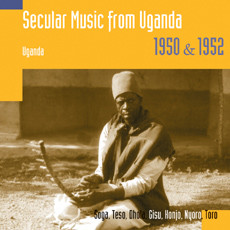
SWP024 - Twinned with our album SWP 008, this cd features music by the people for the people, for their own enjoyment - secular, worldly music free of any court constraints. Likembes, harps, horn ensembles, flutes, etc. Become a convert to the lyrics of the opening track: 'All things in nature love each other, The lips love the teeth, The beard loves the chin, And all the little ants go br-r-r-r together!' |
|
Forgotten Guitars From Mozambique (Portuguese East Africa 1955, 56, 57)SWP25 listen to sound clip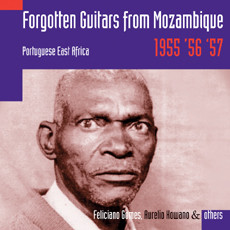
SWP025 - Aside from Katanga in Congo and the Zambian Copperbelt, southern Mozambique also developed its own distinctive guitar sound in the fifties - the roots of marrabenta. Listen to the enigmatic Feliciano Gomes sing about the problems of getting children, promiscuity of women, snobism, jealousy, the supernatural, enjoy Aurelio Kowano's virtuoso rhythm guitar playing, and others - now no longer forgotten. |
The Legendary George Sibanda (Southern Rhodesia 1948, 49, 50, 52)SWP26 listen to sound clip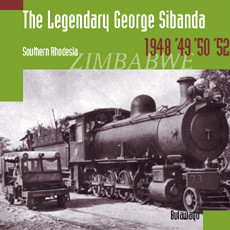
SWP026 - Singer/songwriter/guitarist George Sibanda from Bulawayo, Zimbabwe, was in effect sub-saharan Africa's first music star, discovered by Hugh Tracey in 1948. Alas, he could not cope with fame and fortune and had drunk himself to death by the end of the fifties. A legendary figure, with exceptional guitar-picking coupled with his generous voice and happy-go-lucky songs. |
|
Kenyan Songs & Strings (Kenya 1950 & 1952)SWP30 listen to sound clip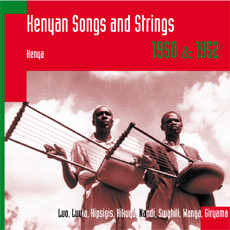
SWP030 - The selection of music here is comprised of a capella choirs and songs accompanied by string instruments. Except for two guitar tracks and one oud track, the string instruments are all lyres - chepkongo, kipukandet, thum, litungu. The strummed lyres sound very guitar-like, at times positively post-punk, and then the wonderful buzzing bass sound of the plucked thum, with strings made of cow tendons. And an array of beautiful traditional vocal styles. |
Colonial Dance Bands (1950 & 1952)SWP31 listen to sound clip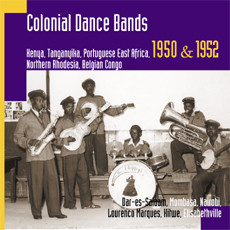
SWP031 - This album presents a variety of African bands playing dance music during the colonial period. Recorded in the British colonies of Kenya, Tanganyika and Northern Rhodesia, Portuguese East Africa, and Belgian Congo. Some bands were professional outfits playing to Europeans, mostly in hotels, others were enthusiastic amateurs. Each and every one was a pioneer in their way, and deserve tremendous respect for that alone. |
|
Bulawayo Jazz (Zimbabwe 1950, 1952)SWP32 listen to sound clip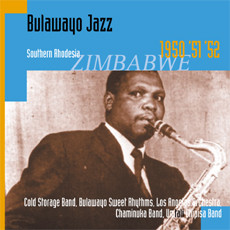
SWP032 - In no book of the history of jazz will you find any mention, let alone a chapter, about an exciting own style of jazz developed in Africa in the early 1950s - in Bulawayo to be precise, economic heart of then Southern Rhodesia now Zimbabwe and gateway to and from South Africa. This is a grand omission. Here, finally, is the evidence. The dominant figure in the Bulawayo scene was August Musarurwa. |
The Very Best Of Hugh TraceySWP34 listen to sound clip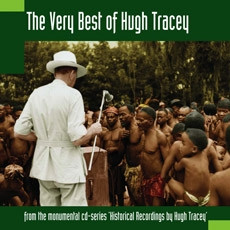
SWP034 - This album consists of one star track from each of the 21 cds in the 'Historical Recordings by Hugh Tracey' series, plus 6 bonus tracks from the original session in 1952 with Jean Bosco Mwenda. These Mwenda recordings surfaced in the archive after Michael Baird had completed the series and we felt that we could not let them fall back into oblivion. SWP 034 is the perfect introduction to Hugh Tracey's recordings! |
Michael Baird, producer of the 21 CD Historical Recordings by Hugh Tracey series, has this to say about his 8 year-long project:
Historical Recordings by Hugh Tracey’ is a new series, not a re-release of selected previous lp albums on cd. It also includes many tracks never published before, and all previously released items can be heard in their unexpurgated entirety for the first time — you will find no fade-ins or outs made by me in this series.
The series is a reappraisal of HT’s lifework, finding itself somewhere in between his more populist ‘Music of Africa’ series of 25 lps and his more academic ‘Sound of Africa’ series of 218 lps. As a musician/composer, my point of departure for the selection of tracks is simple: beautiful music! And I believe that this was also HT’s prime mover throughout his life. But this series, importantly, is also a reappraisal of the music of the sub-continent of central, eastern and southern Africa. The mosaic of the state of music of the sub-continent in the fifties has now been completed — and thus the true value for humanity of HT’s extensive collection of recordings. Of course HT did not visit every place between the Sudanese southern border and the Cape of Good Hope — he hardly recorded in Angola and Namibia, large parts of Mozambique were not reached, north eastern Kenya was left alone — but this was indeed due to such large areas being ‘unpaved’ (his heavy recording truck with fragile equipment needed some kind of reasonable road surface!). So there are gaps in the mosaic, but still we are given a unique insight into so much music and how it is inter-related.
The process of re-mastering this material is one of ‘good taste’ and here that means going as far as necessary in cleaning up old mono recordings, and making them more suitable for the digital medium ‘compact disc’, without losing the authenticity of the recorded moment. Today’s computer technology can be very seductive, but one must always remain focused on the matter at hand: the emotion in the music. This sometimes leads to compromises, as in some cases the coating of the original tapes has deteriorated badly, in other cases the originals are missing and I have to use a backup version, and sometimes there are flaws in the recording, but by and large the quality of the recordings is excellent. My collaboration with Andrew Tracey has been one of friendship. It must also be said that the sound technicians Rolf and Evert at the Kwetterhof Studio are exceptional, they are not only state-of-the-art but also musicians with big ears, and my thanks go out to them.
The sad conclusion after compiling this series is that so much music recorded by HT has since disappeared — within the space of fifty years. This is something HT foresaw and why he spent most of his life recording this music for posterity. It was not so much Tracey’s ‘knack’ of being at the right place at the right time, but his awareness and vision coupled with organisation and his tremendous energy which give us the opportunity to listen to the many exceptional musicians he recorded today. In this series we are able to present many of the foremost musicians of the 20th century from this part of Africa — and that is a gift. It is especially a gift to the peoples involved, for the legacy as played by their forebears belongs to them.
Michael Baird 2006
Last Modified :Thu, 07 Mar 2024 16:32:07 SAST
